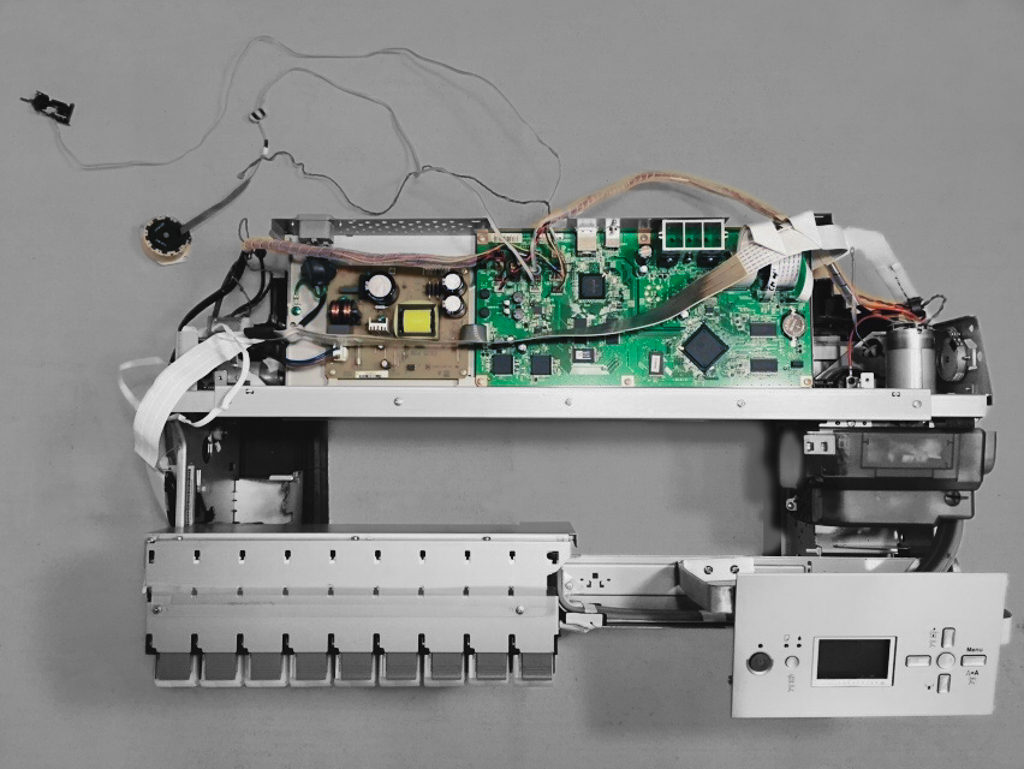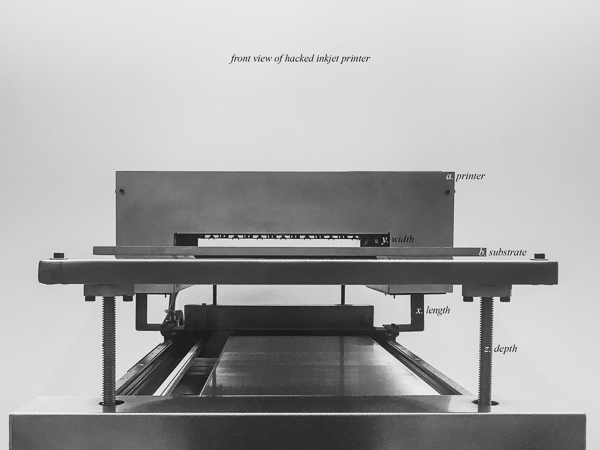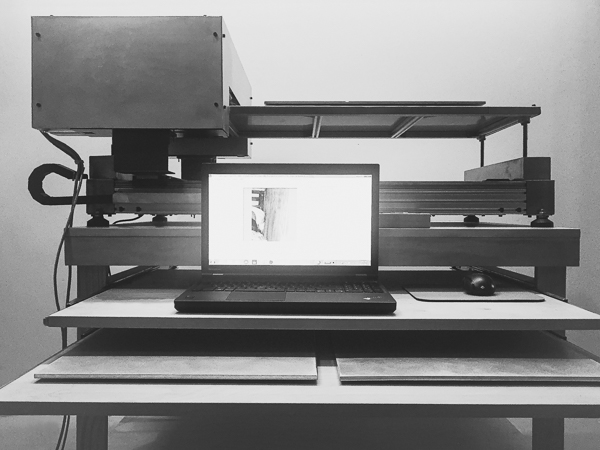Misprints result from a destructive inkjet printing procedure that uses war images from online news agencies to intervene with the current system of representation.
I print the photographs I research with a hacked inkjet printer to arrive at something unpredictable. By forcing various incompatible surfaces such as metal, acetate, and mylar often produces an unexpected consequence. The resulting ink explosions and pooling obscure the original images, rendering them difficult and, sometimes, impossible to recognize. They become abstractions, displayed as back-lit panels, or printed on aluminum plates, tethered to their referents only by the titles, which include the name of the city, state, and date of the incident depicted in the source photograph and the date I made the Misprint.

Viewed from above, is the hacked and gutted inkjet printer with specific components preserved. The original circuit board repositioned to the rear. Understanding what to remove and what to keep was a tedious task, and I had to be clear about which components to remove; otherwise, I would lose the entire printer and start over.
Testing inkjet printer, 2015
Top view with enclosure, 2015


Assembled are the three components of the inkjet printer–the hacked and reconfigured inkjet printer, the stepper motor flatbed machine, and raster image processor (RIP) software running on Windows 7–all working together.